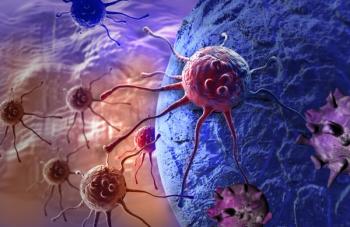
How Far Stem Cell Transplant Has Come
The changes in and management of stem cell transplant.
Over my 18 years as an oncology/stem cell transplant nurse, I have seen many changes.
It was 1997, and as I was walking on to the oncology unit to start my shift, I was thinking to myself, “I hope I don't have a transplant patient in my assignment today.” That was because, up until that time, our 26-bed unit cared primarily for generic oncology patients. By generic, I mean the solid tumors -- breast cancer, prostate cancer, colon cancer, renal carcinoma, etc. But that was now changing. The unit I was working on was starting to branch out into the field of stem cell transplant (SCT) to treat patients who were suffering from leukemia, lymphoma, MDS (myelodysplastic syndrome), breast cancer, and multiple myeloma.
The patient undergoing SCT made us all, as nurses, apprehensive. The responsibilities were great, and the challenges were endless. The chemotherapy regimens for this procedure were extensive and needed to be precise. Certain lab values had to meet criteria to proceed with the regime. Vital signs were monitored frequently. Protocols were set in place and needed to be carried forth in cases of low electrolytes, fever, low hemoglobin/platelets, and serum drug levels. These patients were placed on reverse isolation, and Hepa air filters were placed in their rooms.
On most days, the nurse assigned to care for an SCT patient was given only one additional patient to care for during the shift, as opposed to the five or six patients we were usually assigned. The nurse/patient ratio of 1 to 2 was, of course, for a very good reason. These patients suffered from many different side effects caused by the treatments they received:
• Mucositis (mouth sores) caused by chemotherapy and/or total body irradiation (TBI) could at times become so severe that necrosis would occur, airways would become compromised, and oral bleeding was prevalent.
• Some patients would be administered total parental nutrition (TPN) intravenously due to the inability to eat for several days at a time.
• Graft vs. host disease (GVHD) presented the patient with a whole list of side effects all its own, such as veno-occlusive disease (VOD), GVHD of the gut, and GVHD of the skin. VOD of the liver could place the patient into liver failure and ultimately cause life-threatening symptoms.
I have witnessed GVHD of the gut produce five liters of watery diarrhea from one patient in a single day. I recall a patient with GVHD of the skin. Her whole body appeared to have third-degree burns requiring her to have daily sterile showers and then be covered in Silvadene cream and sterile burn pads due to her severe and prolonged neutropenia.
This was all very overwhelming to me. SCT was out of my comfort zone, and I was afraid I would make a mistake that would cause the patient harm.
Now, let's fast forward to today. Believe it or not, I am still an SCT nurse. When our stem cell transplant unit opened, I immediately put in my transfer to work there in hopes of becoming a part of a great team of doctors and nurses on the cutting edge of oncology medicine.
The SCT unit is a 19-bed intermediate care unit. The entire unit has filtered air. Each patient has a private room, and reverse isolation is now a thing of the past. Our unit is staffed with a social worker, a physical therapist, an advanced practice nurse, a discharge planner, and a dietician. Each assures the complete wellness of our patients. The nurse/patient ratio is now 1 to 4. Fifteen years ago, I could never have imagined having a patient care assignment of four transplant patients!
Years of SCT research has resulted in many different advancements in the field. New drugs and different drug combinations have dramatically lessened the side effects.
• GVHD still occurs, but not to the degree that it did 15 years ago. Though every case is different, GVHD of the skin has improved significantly. Having a patient whose skin is sloughing off due to severe GVHD is a thing of the far past. Most GVHD of the skin is limited to a red generalized rash that usually does not itch but may only feel tight and dry.
• GVHD of the gut may still cause diarrhea in the post-transplant patient, but the quantity has greatly diminished and may be controlled with the use of some additional medications.
• Mucostitis is mild to moderate, in my opinion, compared to earlier years, thanks a newer mouth care regime that has been extremely successful for us in preventing mouth sores.
• TPN is now rarely used, and thus not needed, as a source of nutrition, since mucositis is not always interfering with the patient's ability to eat.
Today patients who have been diagnosed with leukemia, lymphoma, MDS, and multiple myeloma (we no longer perform SCT on breast cancer patients) are living longer lives with fewer complications, thanks to the advancements made in the field of SCT.
I am no longer that apprehensive nurse afraid to care for an SCT patient. SCT is what I know, and it’s who I am. My patients are inspiring and courageous. Our nurses are compassionate and caring, and our doctors are right there on the front lines in the war against cancer.
Newsletter
Stay up to date on recent advances in the multidisciplinary approach to cancer.
































































































